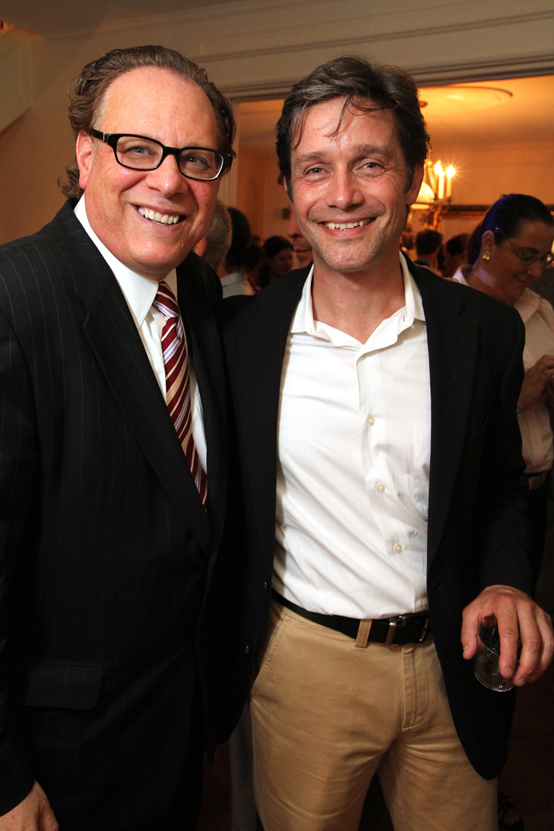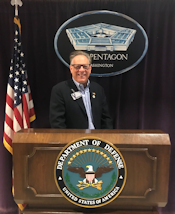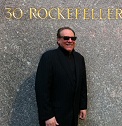NanoBusiness Alliance Interview – Scott Livingston, Chairman & CEO, Livingston Securities, LLC
Posted on June 21st, 2010 in Uncategorized | No Comments »
Today, we continue part IV of our Interview Series looking at Nanotechnology’s top innovators and influencers.
In this month’s interview, we talk to Scott Livingston, Chairman and CEO of Livingston Securities, LLC www.livingstonsecurities.com. Mr. Livingston has been working on emerging technologies at Wall Street firms for over 18 years and has specialized in nanotechnologies since 2002. Mr. Livingston has been called “sharp and highly connected” by the Forbes Wolfe Nanotechnology Report (July 1, 2005) and has been a keynote speaker on advanced technology investment trends at MIT, the National Renewable Energy Lab (NREL), the NanoBusiness Alliance, Brookhaven National Labs, Rice University Center for Nanotechnology, the Lawrence Berkeley Labs, Albany Nanotech, Hillary Clinton’s Jobs for New York, the US Congress Nanotechnology Caucus and the US Congress High Tech Caucus, and at conferences on economic development and job creation through investment in advanced technologies in over a dozen states across America. In addition, Mr. Livingston is also the creator of the annual “Livingston Nanotechnology Conference,” Wall Street’s largest annual nanotechnology investor conference since 2005.
From 2005 to 2009 Mr. Livingston was a Managing Director at Axiom Capital Management, Inc, and head of the Livingston Group, a division within Axiom focused on nanotechnology. From 2000 to 2005 Mr. Livingston was a Director in the Private Investment Management Division at Lehman Brothers. While at Lehman in 2002, Mr. Livingston began his focus on nanotechnology and started to cover the field for institutional and individual investors. Mr. Livingston graduated from the State University of New York at Albany with a B.A. in Political Science with a concentration in International Economic Relations. Mr. Livingston is a Board Member of the NanoBusiness Alliance and a founding Board Member of the New York NanoBusiness Alliance. Mr. Livingston is also a founding member of the Water Innovations Alliance. Mr. Livingston sits on the Board of the Dolan DNA Learning Center of the Cold Spring Harbor Laboratory and the NanoEthics Group. Mr. Livingston’s registrations include Series 4, 7, 24, 27, 53, 55, 63 and 65.
In this interview, we talk to Scott about his views of nanotechnology on Wall Street, the state of the nanotech IPO market and his views on financing nanotech innovation, among other topics. We hope you enjoy our interview with Scott. – Steve Waite
SW: Good to speak with you today, Scott. Thanks for taking time out of your busy schedule to do the interview. How are things going at Livingston Securities these days?
SL: We are very busy. Thanks for having me as a guest, Steve. I am a regular reader of your interviews.
SW: What is Wall Street’s view of the potential of nanotechnology these days?
SL: Emerging technology cycles tend to be similar. Whether we are talking about the internet, which was the emerging technology wave of the 90s, or biotech in the 80s, or autos in the early part of the 20th century, we see a period of initial euphoria, followed by a longer period of investor disappointment, followed by a longer climb out of the hole to a point where the promise is reached. We are still in the “crawling out of the hole” phase, but many of our public nano companies have had tremendous moves over the last year so investors and bankers are noticing that nano can make them money.
SW: With many people on Wall Street seemingly focused intensely on the next quarter, how do you convey to investors the importance of staying focused on the tremendous, longer term potential of nanotech?
SL: Public companies that are a part of the nano universe have shown great quarter over quarter growth over the last year and short term investors have responded by pushing the stocks way up, and allowing the companies to price secondary offerings at levels not dreamed of the year before. While we want to focus on the long term, we aren’t afraid of investors who are focused on hitting quarterly numbers. That can be a two-sided opportunity. If the company misses their short term estimates they may complain about fickle shareholders, but if they hit the quarter they are very happy with those same shareholders.
SW: How has the success of the A123 Systems’ IPO affected your business? Are you seeing great interest among investors in nanotechnology?
SL: A123 Systems was officially the best performing IPO of 2009. The success of the A123 IPO led to S-1 filings for venture backed, innovation-driven companies in biofuels, communications equipment, electric vehicles, solar, and healthcare. Institutional investors have also taken note of A123 primarily due to its volatility and liquidity.
SW: What does the nanotechnology IPO pipeline look like these days? Are there any interesting deals out there on which people should be focused?
SL: I won’t mention specifics because to do so would require me to post prospectuses for each name I mention, but the pipeline is robust right now. The problem is that many of the venture-backed IPOs, that have priced in the first half of 2010, have performed quite poorly. We feel that big investment banks are under serving the innovation economy and this represents the single biggest risk to realizing the potential of nanotechnology in the short term. I’d say the best way to sum it up is “stronger than ever but tenuous.”
SW: Which CEOs, working in nanotechnology, have impressed you the most and what qualities make them special?
SL: Since we are regulated by FINRA rules, I would decline to mention specifics. But generally we’ve seen a pretty good showing by management teams at the major public nano companies. The qualities that make them special include: ability to raise money and manage relations with Wall Street, vision on acquisitions, and ability to inspire and build loyal employee and management teams.
SW: What are the most common mistakes companies make in financing nanotechnology-related ventures?
SL: Underfunding. If you think your business plan calls for $5mm over the next two years, plan to invest $7.5mm. If your business plan calls for $7.5mm, invest $10mm. You don’t want to run out of money just as you are hitting the goal line.
SW: What advice do you have for people who are looking to raise capital to fund nanotech innovations?
SL: That’s a loaded question. Other than the fact that they should all work with Livingston Securities, I’d say that they need to have a deep bench of investors, both strategic, venture and high net worth. They should keep close track of the financings announced by other companies in their verticals and note what is attracting capital in their space.
SW: Do you sense that companies today are taking a more proactive role in discussing the benefits and risks associated with nanotechnology?
SL: We cover over 300 of the S&P 500 companies and loads of other companies, all the way down to the early stage startups. Companies are aware that they need to be on top of advances in nano more than ever.
SW: How is government regulation affecting the nanotech community?
SL: Regulation and the threat/promise of more regulation are a factor but, for the most part, not confined to nanotechnology. Chemical companies, pharmaceutical companies, consumer product companies, etc. are also dealing with the prospect of a more assertive regulatory regime and nanotechnology is not significantly different. Again, this is the opinion of the executive who is looking at the bigger picture. If they drill down into nano there is more depth to those concerns but they’re not isolated to just nano in general.
SW: What, in your view, should policymakers do with respect to nanotech regulation in order to promote and foster nanotech innovation?
SL: Insist on data. Data should be in the form of accepted scientific methods and procedures. Many of the studies that have shown that nano is potentially a threat have done so based on studies that wouldn’t be allowed at FDA or other regulatory agencies. Without data we can’t make informed decisions as to whether or how to regulate.
SW: Livingston Securities has a mission to be one of the world’s leading financial institutions in nanotechnology. What do you think it will take for your firm to be successful in the future?
SL: We have a large clientele of institutional investors and also have accounts with many of the top individual investors in nano. We will be successful even in a weak environment, but a strong market, a better market for IPOs and a little luck wouldn’t hurt.
SW: What are the three most important lessons you have learned in the process of working with the nanotech community over the past decade?
SL: I try to teach people in the nanotechnology community the lessons that I’ve learned over 20 years in the emerging technology community: Pride comes before the fall, It’s all about the rolodex and don’t ever, ever, ever stop raising money.
SW: How has the NanoBusiness Alliance been helpful to Livingston Securities? What role do you see the NbA playing in the future?
SL: The NanoBusiness Alliance is an extremely important organization to our firm. Over the years I’ve pretty much met everyone that there is to meet through the NbA and the access that the group has to key decision makers is unparalleled. If the NbA were better funded it would have the opportunity to become one of the most important industry organizations in America, but without adequate funding from members it is not as effective as it could be. I think that the most important role the NbA plays is as an aggregator of all of the key stakeholders in the nano-based economy and as a regular programmer for those stakeholders to meet and connect.
SW: We assume Livingston Securities will be having its nanotech conference again this year in New York City. Tell us about what you have planned for this year’s conference.
SL: Haven’t started yet, but we always get a great mix of keynotes, panels and discussions and every year we have more hedge funds and VC funds than the previous year. We’ve been exploring adding conferences on a virtual reality platform which would facilitate connections between attendees and bring in a whole new group of participants, as well as saving travel budgets for those that are far away. The key question that still needs to be answered is “Will 2010 be a robust year for IPOs after A123 Systems’ strong IPO in 2009?” Whether that answer is “yes” or “no” is still yet to be determined and the answer to that question will set the tone for our conference in December, 2010.
SW: Thanks again for your time today, Scott. We wish you and your colleagues at Livingston Securities all the best in the future.
NANO NEWS
I www.vincentcaprio.org would like to share with you the following Nanotechnology news articles:
Taking the NanoPulse – Help Wanted: Nanotechnology Experts
http://www.industryweek.com/articles/taking_the_nanopulse_–_help_wanted_nanotechnology_experts_21786.aspx
Forbes/Wolfe Emerging Tech Report
New technologies for removing oil from water are everywhere… Except the Gulf
http://www.luxresearchinc.com/blog/2010/05/new-technologies-for-removing-oil-from-water-are-everywhere%E2%80%A6-except-the-gulf/
The Coolness of Tiny Things
http://www.economist.com/node/16214096?story_id=16214096
Patent Fast Track Proposed
http://online.wsj.com/article/SB10001424052748704515704575282951991894276.html
Regards,
Vincent Caprio “It’s Green, It’s Clean, It’s Never Seen – That’s Nanotechnology”
www.vincentcaprio.org
Executive Director
NanoBusiness Alliance
203-733-1949
vincentcaprio@nynanobusiness.org





